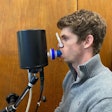
A single childhood protein level could reveal who is destined for COPD later in life. Researchers at the University of Arizona are looking for the answer and have received a $3.8 million grant from the National Institutes of Health to help them along the way.
The theory, according to a news release, is that levels of a lung protein called club cell secretory protein (CC16) can predict who will develop early COPD decades before symptoms appear.
Stefano Guerra, MD, PhD, director of population science at the university’s Asthma and Airway Disease Research Center and the Henry E. Dahlberg Chair in Pulmonary Medicine at the university’s College of Medicine, is leading the five-year study that is being funded by the National Institute of Allergy and Infectious Diseases.
“If we can pinpoint children at risk for early COPD, we might be able to intervene while they’re still young and push them onto a healthier lung growth path,” Dr. Guerra said. “The long-term hope is to prevent lung disease before it ever develops.”
It’s not the first time Dr. Guerra has studied COPD. An earlier paper, “Recent Advances in Understanding Lung Function Development,” was published in F1000 Research. That paper revealed that nearly half of COPD cases arise not because of rapid decline, but because individuals never reach normal peak lung function in young adulthood. This means that a person’s lungs start off smaller or weaker and remain vulnerable throughout life.
Another study Dr. Guerra participated in, “Circulating CC16 and Asthma: A Population-Based, Multicohort Study From Early Childhood Through Adult Life,” established CC16 as a potential biomarker for persistent asthma.
The new project, “CC16 in Childhood and Resilience to Early Airflow Limitation in Adult Life,” will analyze blood samples of CC16 levels from diverse population studies in North America and Europe along with airway samples, such as nasal swabs or sputum, to explore genetic and molecular markers.
“The goal is to go back in time to childhood, measure CC16 levels between ages four and 16, and then follow what happened to lung function in the same individuals as they reach their 20s, 30s and beyond,” Dr. Guerra said.






















